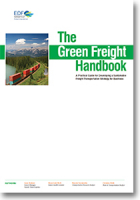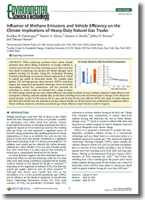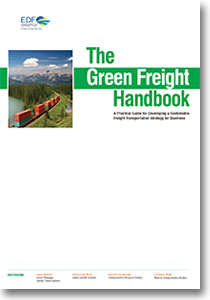Green Freight Handbook
The Green Freight Handbook is a practical guide to help companies develop strategies to reduce greenhouse gas emissions and overall costs linked to freight transportation.
Developed by the Environmental Defense Fund, the Handbook reflects input from many leading researchers, as well as logistics practitioners from globally recognized brands who have successfully reduced their freight-related carbon footprint.
Right now, you have an exciting opportunity to create business value and improve environmental performance by implementing Green Freight strategies.
Whether you’re a retailer, manufacturer, or supplier, you can contribute to a greener planet and save money by getting smarter about how you manage your freight operations.
Freight transportation typically accounts for 15 percent of the cost of goods sold. It also accounts for percent of U.S.-based corporate emissions. When moving goods, costs and carbon are highly correlated metrics - improve one and you will likely improve the other, too.
Through the EDF Green Freight Handbook, we have provided you with the key tools you need to advance your green freight journey.
ESTABLISH METRICS Define the objectives of your green freight efforts and track your progress through performance-based metrics, such as greenhouse gas emissions per ton-mile. Well-defined metrics will keep you focused on the projects with the biggest impact.
ASSESS OPPORTUNITIES Leverage the EDF Five Principles for Greener Freight to identify impactful, strategic green freight projects that create business value and improve environmental performance.
CHOOSE AND IMPLEMENT STRATEGIES Scale-up green freight activities at your company. Use key financial metrics and internal strategies to build the capacity and support needed for these efforts to thrive.
SET GOALS AND REPORT RESULTS Communicate your green freight efforts to key stakeholders and set challenging, multi-year environmental performance goals.
By utilizing these tools you can unlock the environmental, economic and fuel-security benefits available through more efficient logistics.
Whether your company is researching green freight efforts for the first time or has set a multi-year improvement goal, EDF encourages you to take the next step.
By acting today, the influential community of freight shippers can help create a future where freight transport remains affordable, results in less greenhouse gas pollution, and minimizes the threat to public health.
What’s Related



Favorites





